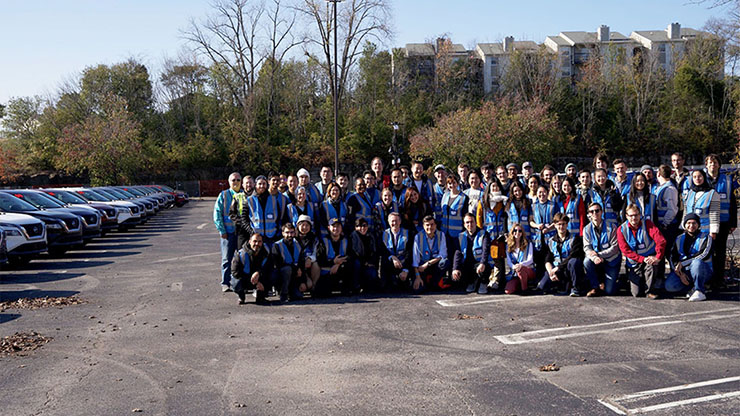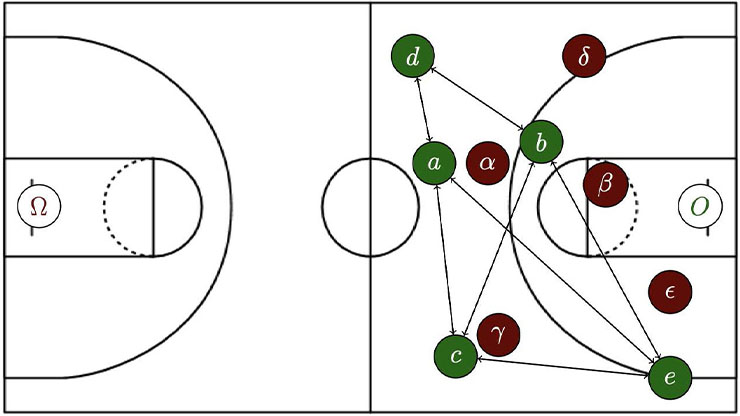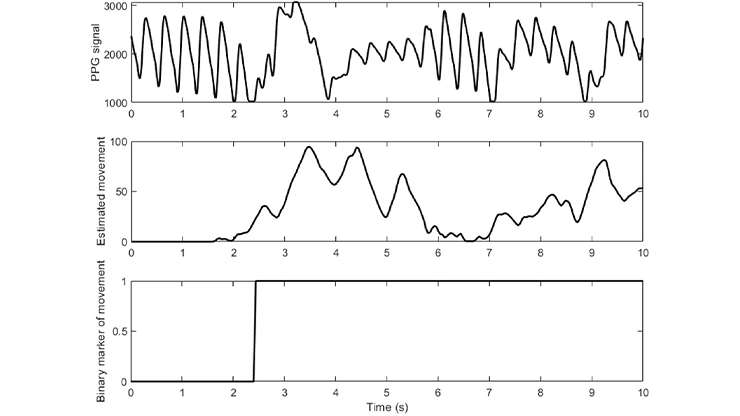For More Realistic Evacuation Experiments, Add Physiological Stress
In typical experiments on pedestrian evacuation, where no actual danger is present, people are generally calm and tend to amble towards the exit in a more or less orderly fashion. This, of course, is not reflective of real emergency scenarios. “If this was a true emergency evacuation, we would see something more of a high stress situation,” Sachit Butail of Northern Illinois University said. The way in which individuals respond to a real emergency scenario is dependent on their personal traits and their ties to other people in the group.
Mathematical models often ignore these social and psychological factors, since they are difficult to measure experimentally — but as a consequence, the models are less realistic. “We’re not representing the stress that is typical in emergency situations,” Butail said. A typical way to simulate the motion of crowds is through agent-based models of pedestrian dynamics, in which each agent has the goal of reaching a certain destination and avoids collisions with other agents and physical objects on the way there. This modeling framework lacks any psychological or social term to represent behaviors one might expect in an evacuation, such as following a group or exhibiting varying levels of stress.

During a minisymposium presentation at the 2025 SIAM Conference on Applications of Dynamical Systems, which is taking place this week in Denver, Colo., Butail overviewed a recent experiment that exposed some participants to physiological stress in an evacuation scenario to understand the responses of the stressed individuals and their influence on others.
In a collaboration with Oluwatobi Kushimo of Northern Illinois University, Lauren Beliveau and Jennifer MacCormack of the University of Virginia, Alethea Barbaro of Delft University of Technology, and Nicole Abaid of Virginia Tech, the researchers created a maze with nine rooms that a total of 137 participants navigated in mock evacuation scenarios. The \(30 \times 30\)-foot maze with seven-foot-tall walls had automatic exit signs that turned on and off, other lights that flashed at random, and sirens to simulate the stimuli of a real evacuation scenario. This facility was set up to capture the positions of participants’ heads at a high sampling rate as they navigated the maze (see Figure 1).
Prior to beginning the evacuation scenario, some participants were exposed to a cold pressor task (CPT), in which they dipped their hands in ice water for two to three minutes. Doing so is a well-established way to induce physiological stress, causing a rise in sweat production and heart rate. As the researchers ran the experiment multiple times over, they investigated several different cases: the navigation of the maze by single individuals, by dyads (groups of two), and by small and large groups of varying sizes. Within the groups, there were three different possible CPT proportions: no one underwent CPT, one person underwent CPT, and half the group underwent CPT.
“The first thing that we’re interested in is, does this affect evacuation time?” Butail said. Statistical analysis of their data indicated that groups with a higher proportion of individuals who underwent CPT evacuated more quickly (see Figure 2). A similar effect was present for single individuals and for dyads. Several other dependencies were also noticeable in the data — for instance, the aspect ratio of the rooms within the maze had a small impact on the evacuation time, and larger groups tended to take longer to leave the maze.
Stress levels also had a bearing on the speed of the participants. For small groups, a higher proportion of the group being exposed to CPT was associated with faster speeds, though this effect was not significant for singles and dyads. Groups with more stressed people also tended to make fewer turns as they moved through the maze; this trend was also present, but not to a significant extent, in singles and dyads. A higher proportion of CPT was further associated with greater physical distance between participants, allowing for an easier flow of people through the maze.

For even more detail, the experimental setup allowed the researchers to investigate the movement of participant’s heads. Up-and-down head motion, which is associated with seeking environmental cues, occurred more often when more people were stressed. On the other hand, CPT had only a marginal effect on side-to-side motion, which is associated with looking towards group mates.
All of these results informed the second part of Butail’s presentation. “So we see faster evacuation times, and we’re wondering why,” he said. “Was there a contagion effect from those who were stressed to those who were not?” There are many different axes on which participants can influence each other: variables like speed, turn rate, and head movement can all be modulated by personality or stress interactions between individuals.
Butail and his collaborators aimed to pick up on these multidimensional interactions using transfer entropy, an information theoretic measure of causality that can capture directionality and influence. They found several significant interactions in dyads where only one person underwent CPT; the speed of the CPT individual marginally affected the other’s side-to-side head movements, while the head movements of the non-CPT individual then affected the turn rate of the CPT individual. In addition, the up-and-down head movement of the CPT individual affected the other’s turn rate. “There are some visible interactions here,” Butail said.
Another part of the story is the personalities of the individuals involved. All of the participants took comprehensive pre-experiment surveys, allowing the researchers to investigate how the reported traits affected speed, turning rate, and ability to influence others. They found that speed increased with neuroticism and risk avoidance, while the tendency to gather external information decreased with conscientiousness — perhaps due to an inclination to follow explicitly stated instructions. Those who were more agreeable and conscientious tended to influence others less, while antisocial, neurotic, and risk avoidant individuals had a larger influence on others.
Ultimately, measuring these effects in groups and dyads contributes to larger efforts to improve the safety of evacuation structures and procedures. “We have proof that physiological stress does play a significant role in evacuations,” Butail said. “This is all food for the mathematicians in our group to upgrade their models and make them more realistic.”
Acknowledgements: Sachit Butail acknowledged Teague Henry of the University of Virginia as well as Brandon Hale, J.D. Champagne, and research assistants. This work was supported by the U.S. National Science Foundation under grant numbers 2308755, 2308753, and 2308754.
About the Author
Jillian Kunze
Associate editor, SIAM News
Jillian Kunze is the associate editor of SIAM News.

Related Reading
Stay Up-to-Date with Email Alerts
Sign up for our monthly newsletter and emails about other topics of your choosing.






